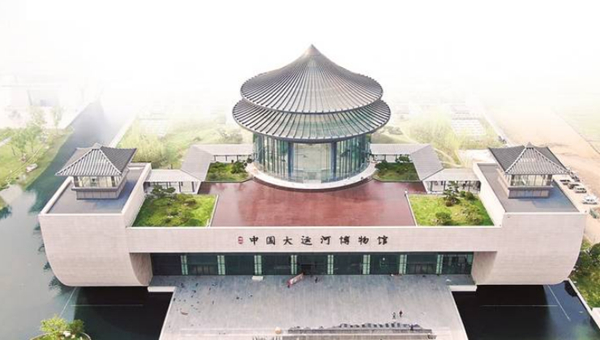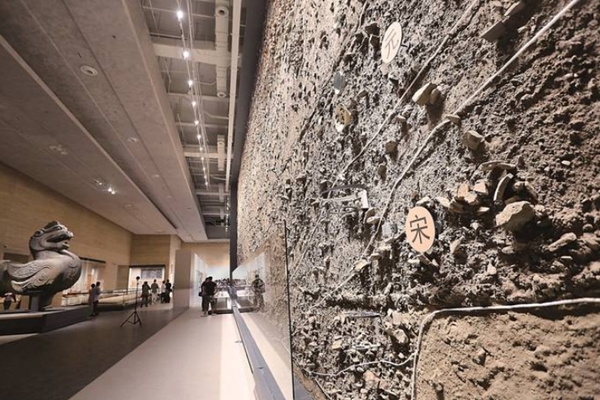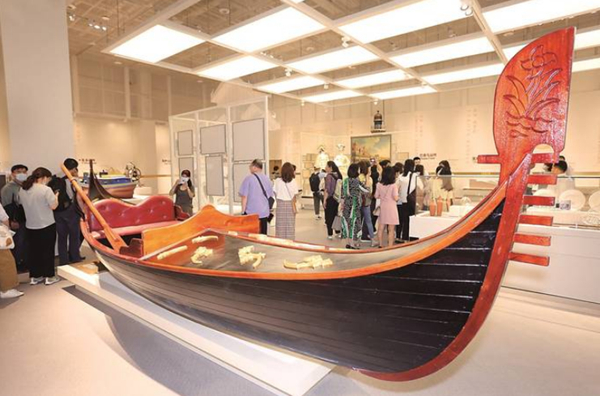
The Yangzhou China Grand Canal Museum located in the Sanwan scenic area opened on June 16 after the construction and exhibits display in one year and nine months.
The museum showcases the birth and development of the vast waterway system that has a history of 2,500 years and a total length of 3,200 kilometers. With a collection of nearly 10,000 pieces of relics, the museum hosts 13 permanent and temporary exhibitions to feature the canal’s recognition as a UNECSO cultural heritage.

The largest exhibit is stratified soils taken from the watercourse near Zhouqiao in Henan Province, which is 25.7 meters long and 8 meters high. It shows the soil layers filled with remains of bricks, tiles, ceramics, animal bones, metal tools and more left since the Tang Dynasty (618-907), providing a quick glance of the canal’s long history.

(Photo/Yu Ping & Song Ning)
The highest exhibit in the museum is a replica of a boat used in sailing from Yangzhou to Hangzhou in the Ming (1368-1644) and Qing (1636-1912) dynasties, often by the rich to watch shows or hold a wedding ceremony. The boat is 21 meters long and has a mast of 15 meters. The video projections simulate the boat sailing along the canal from Hangzhou to Yangzhou via cities of Suzhou, Wuxi, Changzhou and Zhenjiang.
The heaviest exhibit is a pair of boat-shaped coffins excavated in Longquan Village, Dagang Town of Zhenjiang City, close to the canal. The coffins for a couple living in the Tang Dynasty were connected by a corridor, a symbol of their everlasting love in the other world. To preserve the excavation, the tomb was moved as a whole to the museum so the total weight reaches 55 tons.




















